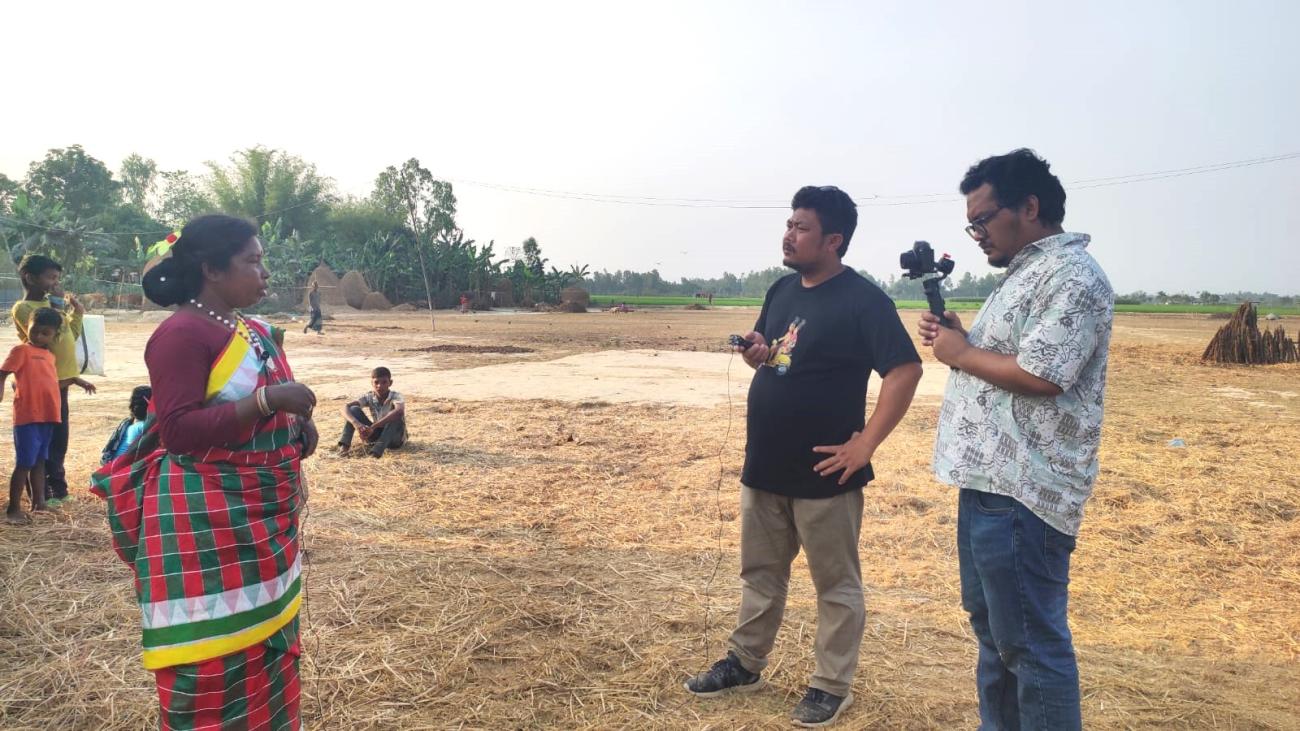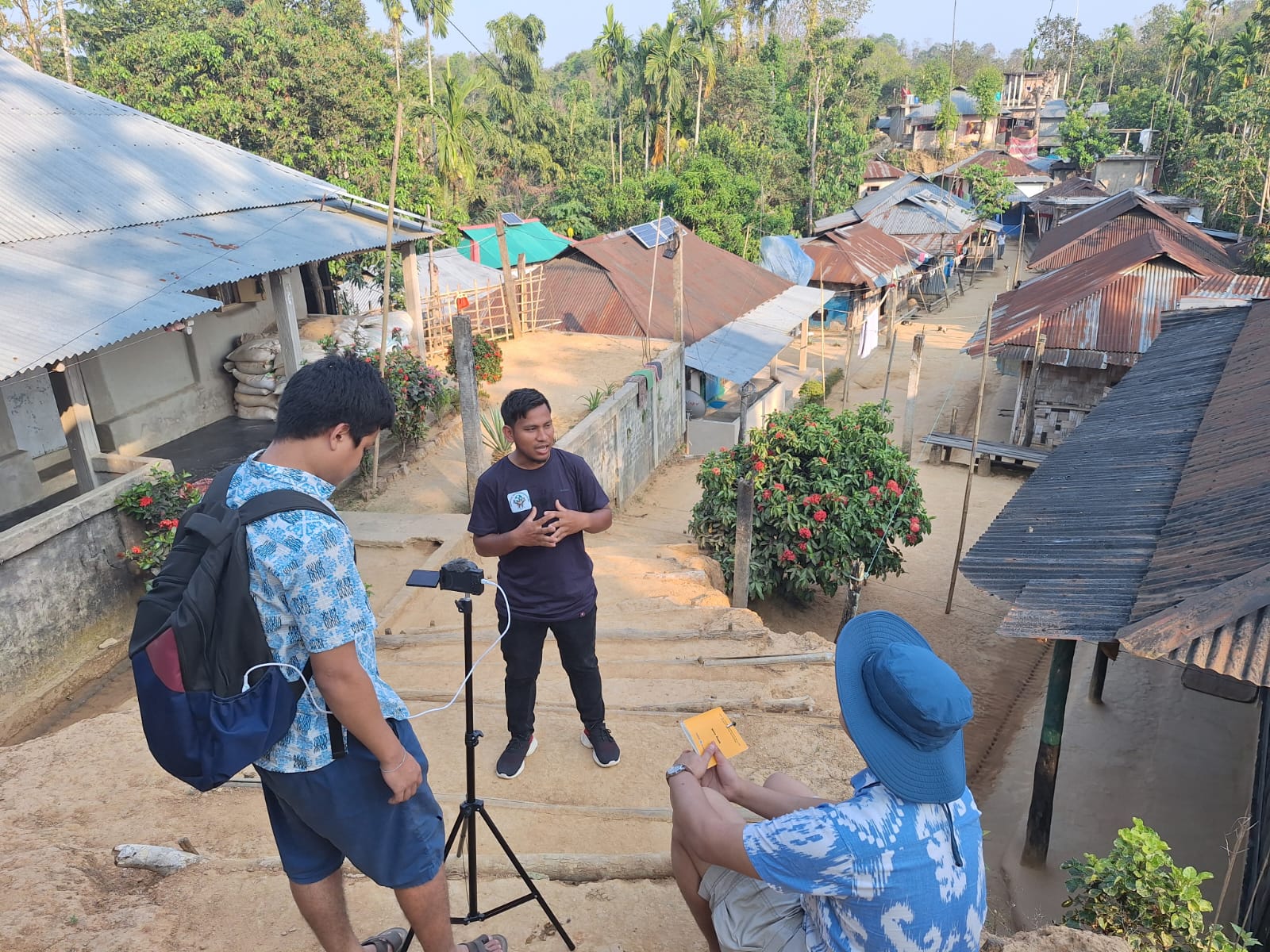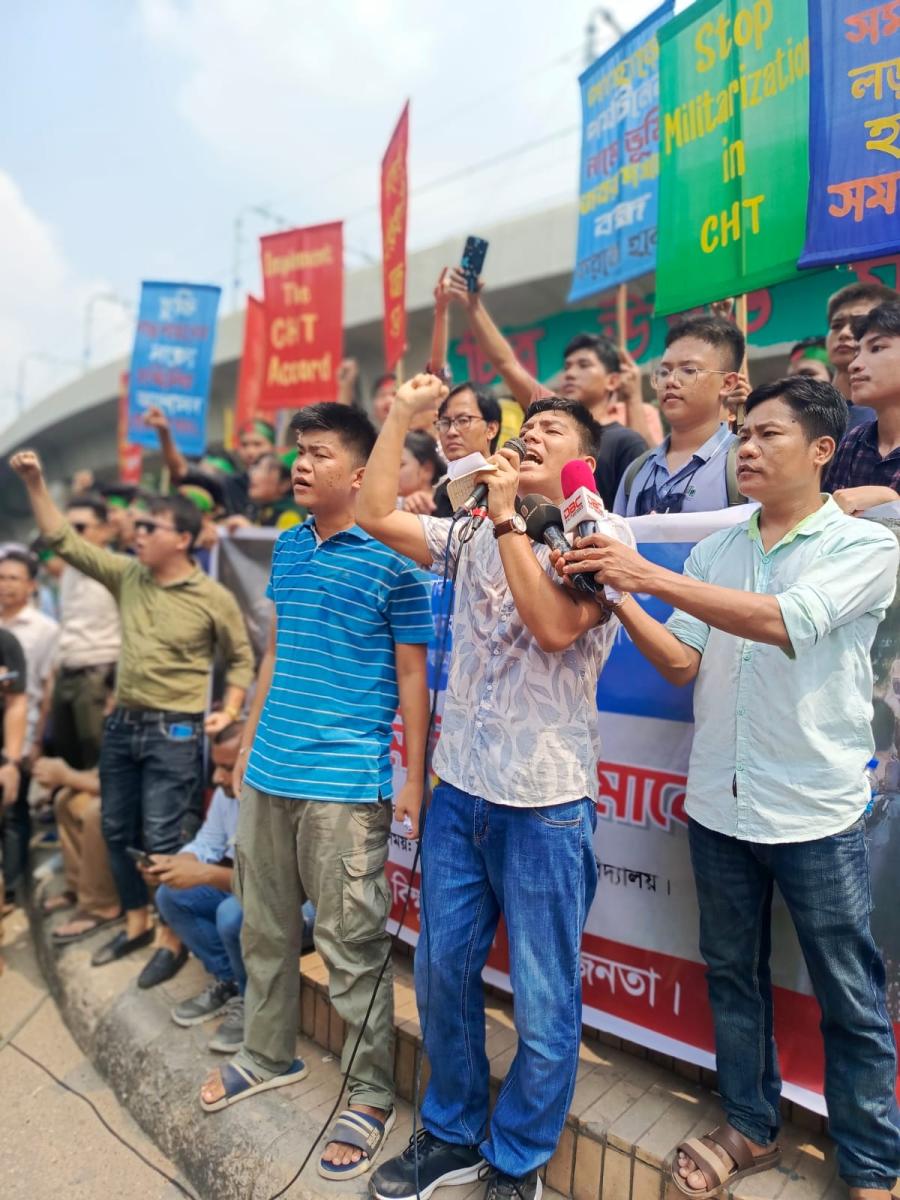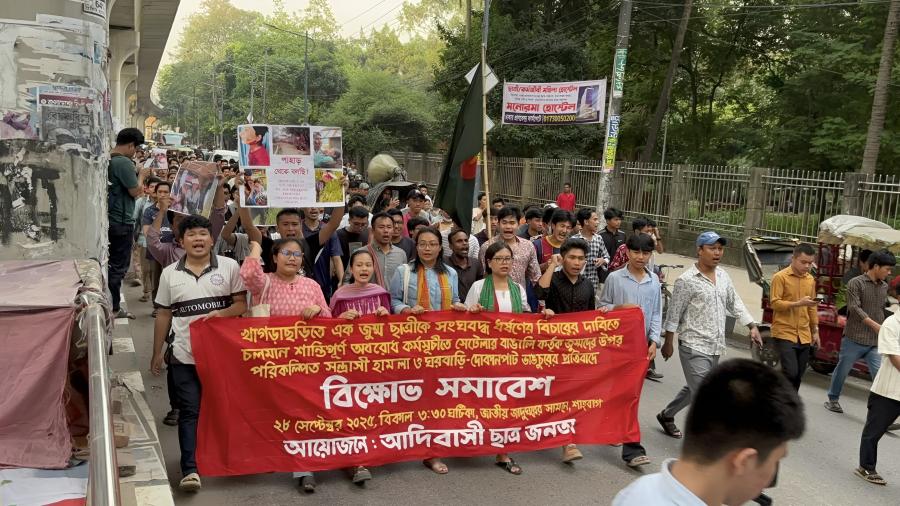
By IPNEWS
From May 2024 to March 2025, Indigenous Peoples News Bangladesh (IPNEWS) carried out a media project with support from Cultural Survival’s Indigenous Community Media Fund. “Amplifying Indigenous Voices: Audiovisual Reporting & Leadership Development in Bangladesh” focused on one goal: making the stories of Indigenous Peoples in Bangladesh heard—clearly, widely, and truthfully.
In our country, Indigenous stories are often missing from mainstream media. When they are reported, they are often incomplete or misrepresented. This project was designed to change that by using the power of audiovisual reporting and English-language storytelling to highlight the voices of Indigenous communities not just for a national audience, but also for people around the world.
A major part of the project focused on producing high-quality audiovisual reports that shared real, on-the-ground experiences of Indigenous communities in different parts of Bangladesh. These videos covered urgent issues like land grabbing, the effects of floods, erosion of traditional governance systems, human rights violations against Indigenous Peoples across the country, and other challenges that Indigenous Peoples face daily but that often go unreported in the national media.
In total, we produced 12 audiovisual stories, exceeding our original target of 9. Each report was filmed and edited with care to reflect the real voices, languages, and perspectives of the people affected. These stories helped bring forward the truth straight from Indigenous communities themselves, without needing to rely on outside media filters.
Alongside the video content, the project also aimed to bridge a communication gap between local communities and the rest of the world. We translated and published nine written reports in English covering a wide range of Indigenous rights issues. These written pieces helped reach global audiences from human rights organizations to international advocacy platforms, ensuring that the concerns of Indigenous Peoples in Bangladesh are no longer hidden or misunderstood.

One of the most exciting outcomes of this project was the size of the audience we reached. Initially, we hoped to reach around 50,000 people through our media platforms during the course of the project. However, by the end of the project, our stories—especially the audiovisual and English reports—had reached over 475,000 viewers and readers through Facebook, our website, and other online spaces. This result showed us the real power and demand for Indigenous storytelling: when we tell our own stories, people listen.
With Cultural Survival’s support, we were able to purchase a desktop computer for video editing, two tripods for filming, and two hard disks for safely storing footage and data. These basic, but essential, items made a big difference in the quality, speed, and sustainability of our work. Even beyond the life of the project, these tools will continue to help us create and share stories from Indigenous communities across the country.
Implementing the project was not without challenges. During the early stages of the project, Bangladesh experienced a period of serious political unrest, including protests and nationwide instability. Because of this, we had to delay some activities such as training programs and field visits. Travel was difficult and safety was a real concern. We responded by reorganizing our timeline, adapting to safer locations, and using remote tools when possible. Although the situation was difficult, it also highlighted the importance of what we were doing. During uncertain times, accurate and honest media becomes even more important.
These challenges didn’t hold us back; in fact, they made our reports more relevant. Indigenous issues became more visible during the unrest, and our reports gained more attention than we had expected. Some of the topics we covered were even picked up by mainstream media for further reporting, proving that community-led journalism can influence wider public conversations.
The success of this project has also helped raise the profile of IPNEWS as a trusted media outlet on Indigenous issues in Bangladesh. Our online following grew from 22,000 to 30,000 active followers, and many readers and viewers sent messages of support, saying they appreciated hearing directly from Indigenous people about what’s happening in their communities.
We also saw increased interest from human rights groups, advocacy networks, and community-based organizations that now want to work with us. These new connections are creating opportunities for future collaborations and more story-sharing. It’s a strong sign that Indigenous-led media is becoming a respected and growing force.
What we’ve learned is clear: audiovisual storytelling matters. It reaches people quickly, crosses language barriers, and makes complex issues easier to understand. Adding English-language reports to our media strategy was also a key decision. It allowed us to speak beyond our borders, not just to local policymakers and citizens, but to global audiences who care about justice, equity, and human rights.
As we move forward, IPNEWS is committed to continuing this work. We plan to continue producing reports, expand our coverage to more Indigenous regions, and train more Indigenous youth to become skilled, confident media creators. We also aim to build stronger partnerships with national and international platforms that support Indigenous voices.
This project showed us that even in difficult conditions, when Indigenous people have the right tools and platforms, they can tell powerful stories that inspire real change. It proved that there is a global audience ready and willing to listen. Most importantly, it reminded us that the voices of our communities are not only important—they are essential.
We are grateful to Cultural Survival for believing in this mission and supporting it with both resources and trust. The journey doesn’t end here. With stronger tools, better skills, and growing support, IPNEWS will continue working toward a future where Indigenous stories are no longer on the margins, but at the center, where they belong.
In 2024, IPNEWS received a grant from Cultural Survival’s Indigenous Community Fund, which provides opportunities for international Indigenous radio stations to strengthen their infrastructure and broadcast systems and creates training opportunities for journalism, broadcasting, audio editing, technical skills, and more for radio journalists from Indigenous communities around the world. In 2024, the Fund provided $480,000 in grants to 57 Indigenous communication projects benefiting Indigenous communities in 25 countries across the Americas, Africa, and Asia, including Argentina, Bangladesh, Bolivia, Botswana, Brazil, Chile, Ecuador, Colombia, the Democratic Republic of Congo, El Salvador, Guatemala, India, Kenya, Mexico, Nepal, Nigeria, Peru, the Philippines, Senegal, South Africa, Tanzania, the United States, Venezuela, and Zimbabwe.
Pictures courtesy of IPNEWS


